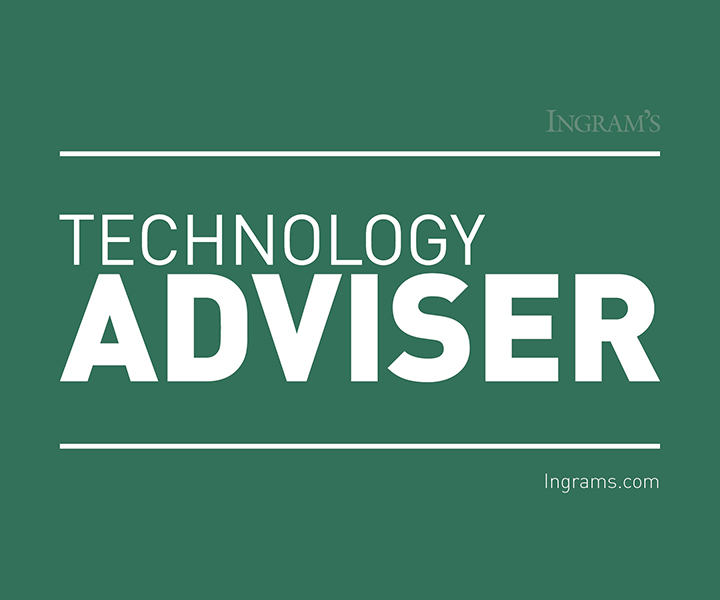HOME | ABOUT US | MEDIA KIT | CONTACT US | INQUIRE
HOME | ABOUT US | MEDIA KIT | CONTACT US | INQUIRE
There’s no way to know what’s coming down the pike, so get your processes right before the new technology arrives.

It can be tricky to predict exactly what the next must-have piece of technology will be. And if you oversee buying decisions for your company, it’s only going to become more challenging.
According to Gartner, the global market for enterprise software is expected to reach $583.9 billion per year by 2022, growing at a compound annual rate of 8.3 percent. Thousands of platforms and tools are competing for your technology budget, and they’re all armed with an ever-shinier arsenal of bells and whistles, especially in my field of marketing analytics.
 It’s easy to feel pressured to buy the newest product — after all, nobody wants to fall behind the competition. Unfortunately, in a lot of cases, bells and whistles are all these vendors are offering: something that looks pretty, makes a lot of noise and doesn’t do much beyond devouring your time, money and morale.
It’s easy to feel pressured to buy the newest product — after all, nobody wants to fall behind the competition. Unfortunately, in a lot of cases, bells and whistles are all these vendors are offering: something that looks pretty, makes a lot of noise and doesn’t do much beyond devouring your time, money and morale.
The good news? It’s not impossible to select a platform that generates true ROI for your organization. The secret is to focus on people first.
The most successful solutions, the ones that become industry leaders, tend to succeed because they solve real problems for real people. They either make users’ lives easier or their bank accounts fatter.
If you’re listening to your team members and encouraging them to speak frankly about their frustrations, if you’re regularly surveying your clients about what irritates them, you’re going to acquire a sharper insight into their problems.
You won’t have to guess if you really need to purchase that new software that everybody else is buying. The need will be so well defined, so well understood, that you’ll be able to quickly and clearly vet new solutions.
I’ve got some personal experience in this area. Ten years ago, my co-founder and I were a two-person consulting firm dedicated to marketing analytics. We helped (and still help) advertising agencies and big brands to understand how their digital marketing was performing.
To create monthly reports for our clients, we had to download numbers from a menagerie of advertising platforms. Then we cut and pasted all that data, line by miserable line, into a series of Excel spreadsheets and prayed it all wouldn’t crash.
When we couldn’t find software that could do that job for us, we went to the trouble of building our own enterprise-class data management solution — that’s how intense our pain was.
Today, we sell that solution, ChannelMix, to advertising agencies and large brands that endured the same kind of misery we did years ago.
Many of the decision-makers we encounter are C-suite executives or team leaders. Almost all of them are searching for better technology because other people in their organization — the people closest to the pain — pointed out a problem. In many cases, these front-line employees have already done the bulk of the early research on potential solutions.
By involving your team members in the process of buying technology, you increase the odds that they’ll actually use that solution after it’s imple-
mented.
It’s not enough to deploy new software and just order your team to use it. I mean, you can, and many executives do. They lean on their authority. But that usually isn’t going to result in the kind of enthusiastic adoption that allows you to get the full benefit of a new solution.
You can also increase employee engagement by dedicating time and resources to onboarding and training for any new technology you introduce to your organization. The best enterprise solutions include this kind of support as a standard part of their package, often with help on devising a strategy to use the solution. You’re not just buying the vendor’s platform, but the expertise of their people, too.
If you’re in the market for a new technology solution, you’re probably trying to resolve a pressing problem. Maybe you’re struggling with an inefficient process, like we were, or maybe your customers are demanding greater value from you.
Once you find technology that fills that need, you’re probably going to find yourself with a little breathing room and the freedom to ask “what’s next?” with your business. It’s an exciting place to be.
As you search for technology resources that will help your organization evolve and expand, remember to keep your focus on your people — your employees and your customers. What problems are they facing? What do they want and need?
Answer those questions, and you’ll be able to cut straight through the hype surrounding the latest, greatest software, no matter how far out on the bleeding edge it may be. You’ll finally possess the power to zero in on the perfect solution for your business.